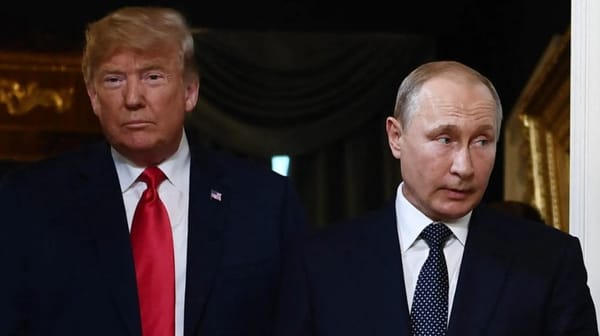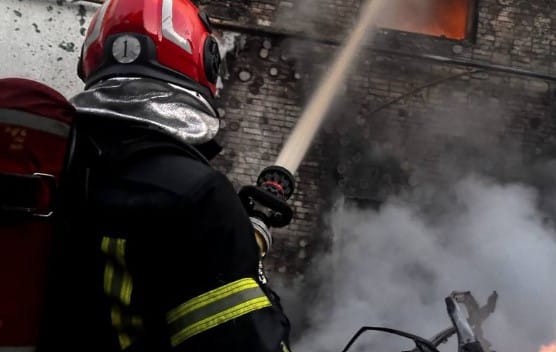European Leaders Divided Over Ukraine Support Strategy at Paris Summit

On March 27, 2025, leaders from nearly 30 countries, along with NATO and EU chiefs, gathered in Paris for a crucial summit aimed at bolstering support for Ukraine in its ongoing conflict with Russia. The meeting, hosted by French President Emmanuel Macron, highlighted both the unity and divisions among European nations as they grapple with the challenges of supporting Ukraine and securing long-term peace in the region.
Key Developments
- Reaffirmation of Support: European leaders unanimously agreed to maintain and potentially increase sanctions against Russia until Moscow halts its aggression against Ukraine[1].
- Military Aid: France announced a new military aid package worth over $2 billion for Ukraine, including air defense systems, missiles, and other equipment[2].
- Proposed "Reassurance Force": The most contentious issue was the Franco-British proposal for a European troop deployment in Ukraine post-conflict[3][4].
- Diplomatic Efforts: The summit addressed recent U.S.-brokered agreements on Black Sea shipping and energy infrastructure, while acknowledging ongoing challenges in the peace process[5].
The "Reassurance Force" Proposal
The concept of a "reassurance force," spearheaded by France and the United Kingdom, emerged as the most divisive topic at the summit. This proposed force would consist of European troops stationed in Ukraine after a potential peace deal to deter future Russian aggression[3:1][4:1].
Key aspects of the proposal include:
- Potential deployment of 10,000 to 30,000 troops[6]
- Positioning in strategic locations within Ukraine[3:2]
- Aim to provide security guarantees and deter future Russian attacks[4:2]
However, the proposal faced significant challenges:
- Lack of Unanimous Support: Macron acknowledged that not all European allies agreed with the plan[7][5:1].
- Logistical and Political Hurdles: Building a force large enough to act as a credible deterrent poses challenges for nations that have reduced their military capabilities since the Cold War[6:1].
- Command Structure: Questions remain about who would lead the force and how it would respond to potential violations of a peace agreement[6:2].
- Russian Opposition: Moscow has consistently rejected the idea of foreign troops in Ukraine[8].
- Uncertainty over U.S. Support: The potential role of U.S. forces and intelligence in backing the European contingent remains unclear[6:3].
French and British Leadership
Despite the lack of unanimous support, France and the UK are pushing forward with the initiative:
- Macron stated, "It is not unanimous. That is known. Besides, we do not need unanimity to achieve it"[7:1].
- Both countries plan to send military delegations to Ukraine in the coming days to discuss the "reassurance force" and the future structure of Ukraine's military[9].
- The UK's Prime Minister Keir Starmer emphasized the need for a force "designed to deter, in order to send that message to Putin that this is a deal that is going to be defended"[9:1].
Alternative Approaches
While the "reassurance force" garnered significant attention, other strategies for supporting Ukraine were also discussed:
- Continued Military Aid: Many countries reaffirmed their commitment to providing military assistance to Ukraine[2:1].
- Economic Sanctions: Leaders agreed that sanctions against Russia should not only be maintained but potentially increased[1:1].
- Diplomatic Efforts: The summit addressed recent U.S.-brokered agreements on Black Sea shipping and energy infrastructure[5:2].
Challenges and Concerns
The summit highlighted several ongoing challenges in supporting Ukraine:
- Ongoing Conflict: Despite diplomatic efforts, the war continues, with recent Russian drone attacks and shelling reported in Ukraine[5:3].
- Economic Constraints: Europe's slow economic growth and high debt levels complicate efforts to increase military spending[4:3].
- U.S. Role: Uncertainty surrounding the United States' long-term commitment to Ukraine under the Trump administration has prompted European nations to consider taking on greater responsibility[4:4].
- Russian Tactics: British Prime Minister Starmer accused Russia of "filibustering" and "playing for time" in peace negotiations[9:2].
- Public Opinion: European leaders must balance their support for Ukraine with domestic concerns about prolonged involvement in the conflict.
International Reactions
The summit and its outcomes have drawn attention from key international players:
- United States: While not present at the meeting, U.S. President Donald Trump was briefed on the discussions, highlighting the ongoing importance of transatlantic cooperation[4:5].
- Russia: Moscow has consistently opposed the idea of foreign troops in Ukraine, viewing it as a threat to its interests in the region[8:1].
- Ukraine: President Volodymyr Zelensky, present at the summit, expressed cautious interest in the various proposals while emphasizing that "there are a lot of issues, there are fewer answers"[9:3].
Looking Ahead
As European leaders leave Paris, several key questions remain:
- Will the "reassurance force" proposal gain broader support among European nations?
- How will the U.S. respond to Europe's efforts to take on a more significant role in Ukraine's security?
- Can diplomatic efforts, including recent U.S.-brokered agreements, lead to meaningful progress towards peace?
- How will Russia react to Europe's renewed commitment to supporting Ukraine?
The Paris summit marks a critical juncture in Europe's approach to the Ukraine conflict. While disagreements over the proposed "reassurance force" highlight the challenges of forming a unified strategy, the meeting also demonstrated Europe's commitment to supporting Ukraine and seeking a lasting peace in the region. As diplomatic efforts continue and the conflict evolves, the decisions made in Paris will likely shape the course of European involvement in Ukraine for years to come.
https://www.lemonde.fr/en/international/article/2025/03/27/france-and-britain-offer-to-send-reassurance-force-to-ukraine-once-peace-deal-is-reached_6739571_4.html ↩︎ ↩︎
https://www.cbsnews.com/news/russia-ukraine-war-trump-europe-france-uk-lead-coalition-of-willing/ ↩︎ ↩︎
https://www.euronews.com/my-europe/2025/03/27/coalition-of-the-willing-meets-in-paris-to-strengthen-support-for-ukraine ↩︎ ↩︎ ↩︎
https://www.reuters.com/world/europe/ukraines-allies-meet-with-new-aid-security-assurances-mind-2025-03-27/ ↩︎ ↩︎ ↩︎ ↩︎ ↩︎ ↩︎
https://www.stripes.com/theaters/europe/2025-03-27/european-talks-proposed-force-ukraine-17275660.html ↩︎ ↩︎ ↩︎ ↩︎
https://www.dailysabah.com/world/europe/european-allies-divided-over-proposed-force-for-ukraine-macron ↩︎ ↩︎
https://www.nytimes.com/2025/03/27/world/europe/european-leaders-ukraine-support.html ↩︎ ↩︎
https://kyivindependent.com/plans-for-european-reassurance-force-in-ukraine-gain-traction-as-coalition-of-the-willing-meets-in-paris/ ↩︎ ↩︎ ↩︎ ↩︎




